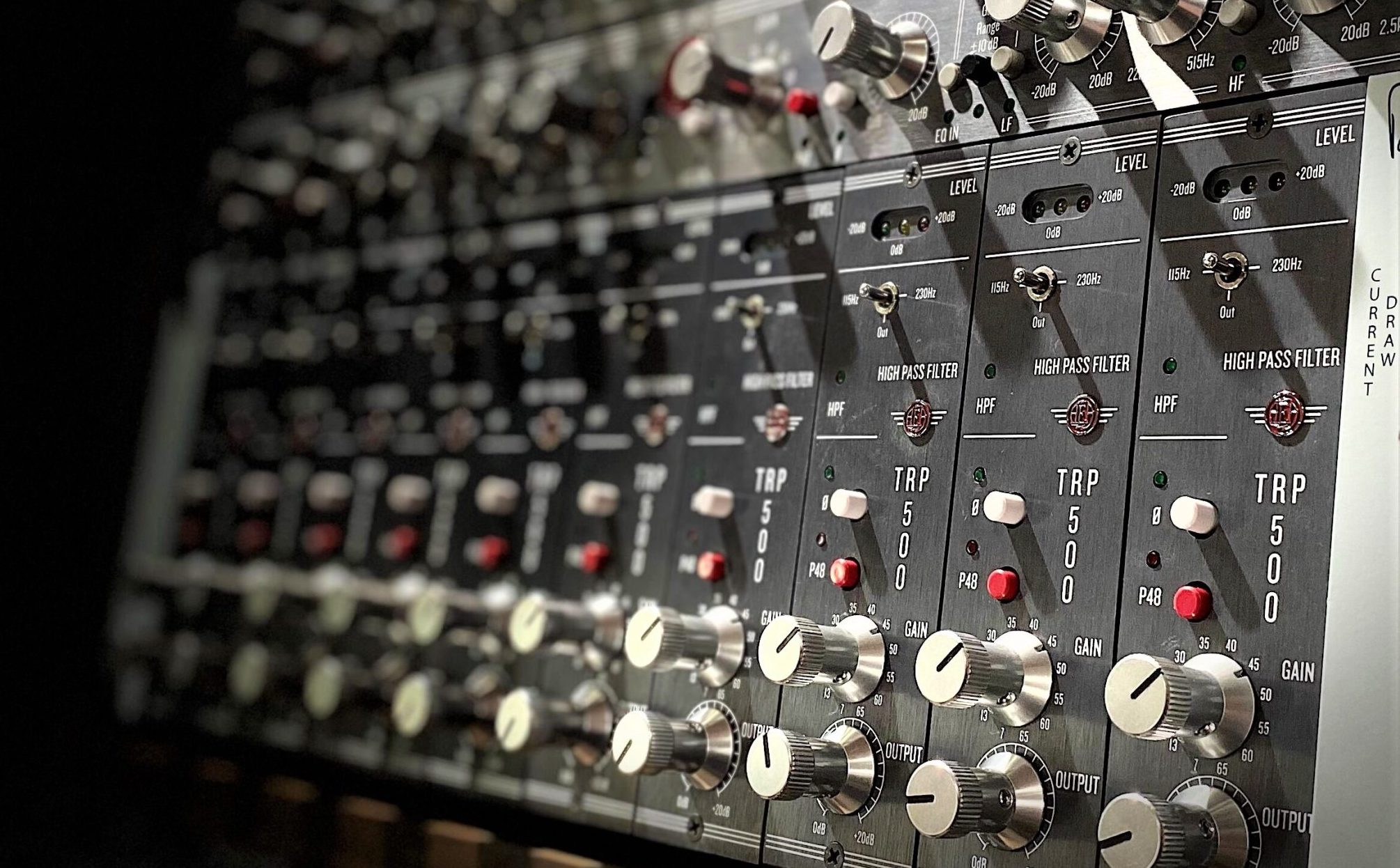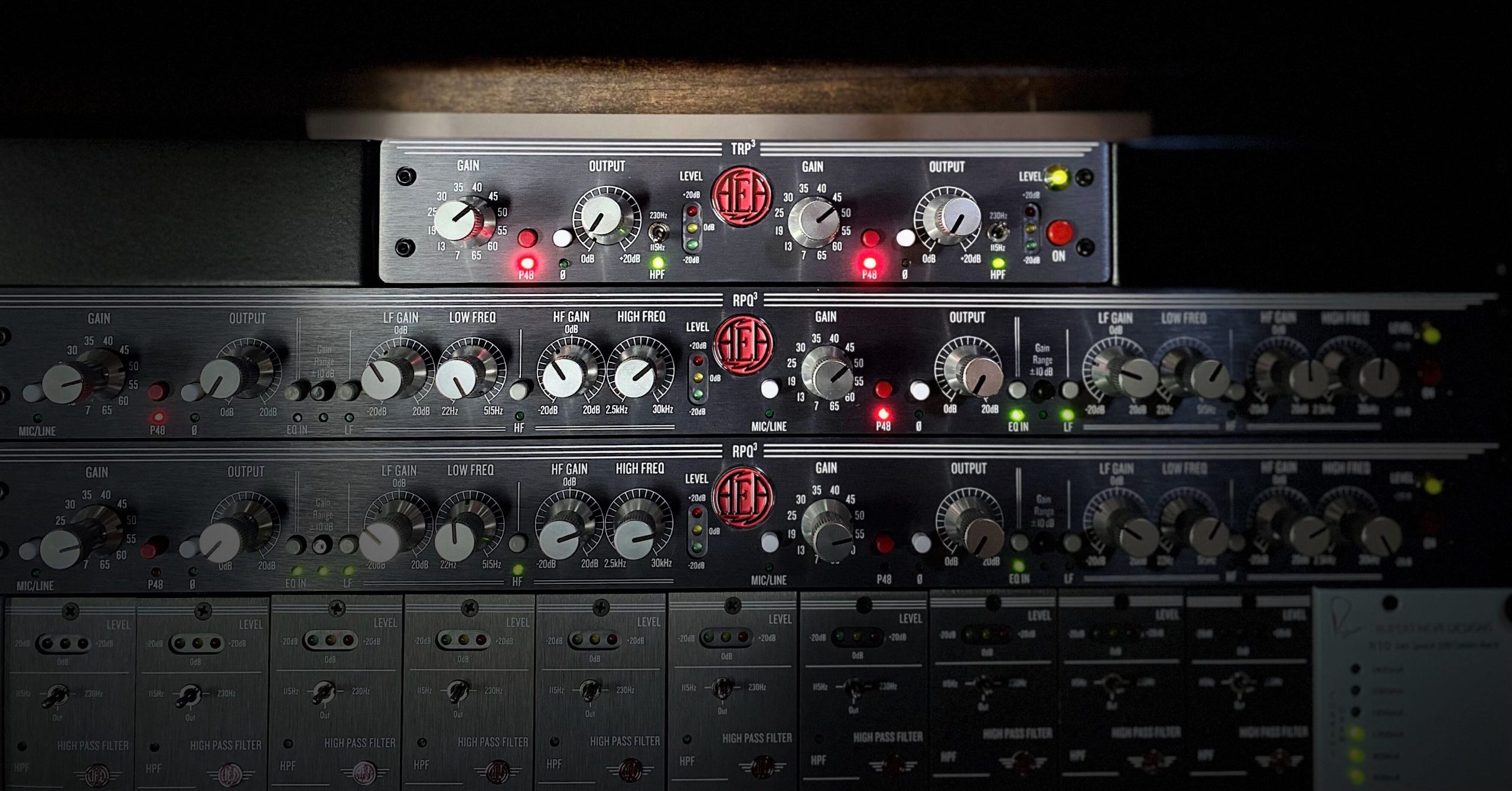We’re proud that, to many, the AEA name is synonymous with fine ribbon microphones. We may be biased, but we think our TRP (The Ribbon Pre) microphone preamplifiers make them sound even better. Now, in their 3rd-generation, the TRP3 and TRP500 are our cleanest and most musical designs yet. Here’s an in-depth look at the TRP series’ optimized design, the preamps’ features, and how they can improve your recordings.

Ample Low-noise Gain
While passive ribbon microphones like our R84 are industry standards, they, on their own, have relatively weak electrical output. They’re only at their best when paired with a high-quality, low-noise preamplifier with plenty of gain.
Different engineers will recommend different gain levels for the job; the TRP’s 85 dB exceeds nearly all of them. The TRP3’s dual channels also make it an ideal solution for multi-mic applications such as stereo recording. You get an extremely wide sonic spread and incredible fidelity from a half-rack unit.
The Importance of the Right Impedance
Impedance is an electric circuit’s opposition to the electrical signal feeding into it. Though a bit counterintuitive, the higher the impedance, the less the circuit “loads” or pushes back against an input signal.
This input impedance plays a huge role in how your microphones perform. The higher the impedance, the better the mic pre will sense subtle variations in your ribbon’s low-level signal.
Mic pres with a relatively low input impedance force the microphone to work harder to generate a suitable signal. This can inhibit the rich and powerful low-end response you expect from your ribbons. Transient response also suffers, leading to a lack of clarity and definition. When using passive microphones, the higher your pre’s input impedance, the better.
The TRP: Perfect Impedance Every Time
A good rule of thumb for matching a preamp to your ribbon mic is to find a pre with five times the input impedance compared to the output impedance of your mic. Again, the TRP more than meets the need. It features an ultra-high input impedance of 68K ohms. That’s over 20 times the output impedance of the R44CE. AT 68K ohms. You can connect any passive ribbon mic to the TRP and expect maximum detail and fidelity.

Masterful Low-frequency Control
One reason engineers reach for ribbon microphones is their beautiful low end, which is enhanced by their inherent sensitivity to proximity effect. When you want to feel the full weight of a piano’s lowest registers or truly capture the “whoomp” of an upright bass, few things compare to a ribbon mic.
Capturing these bass frequencies is one thing; controlling them is another. While careful mic placement can bring out the mics’ character, it’s still nice to have the TRP’s straightforward low-end control.
Its single-pole high-pass filter (HPF) is switchable between -3 dB at 115 Hz or 230 Hz. The 115 Hz setting is perfect for reducing rumble, while the 230 Hz setting is great for carving out sonic space without sacrificing body and depth. Always start with the appropriate mic position, then use your TRP to zero in on the perfect bass for your recording.
Also Great for Active, Condenser, and Dynamic Mics
When using an active mic, the quality of your phantom power supply has a direct impact on your mic’s performance. Not all phantom power sources deliver true 48V power. While they may power your microphone, lower voltages narrow your mic’s dynamic range and rob it of its peak performance.
Our TRP preamps provide full, clean power, making them as great on active mics as on passives. Your active microphones will perform as intended and deliver your signal with maximum clarity and minimum noise every time.
TRP pres are also superb for condenser and dynamic microphones. Whatever mic you use, the TRP gives it a new dimension of sonic character.

Maximize Your Ribbon Mics with the AEA TRP Preamps
We designed the TRP ribbon preamps to make every mic you own sound better. Their input impedance matches well with just about any microphone, they have more than enough gain for any application, they offer fast, musical, low-frequency control, and they address all the considerations of passive ribbon mics. If you want to hear your ribbon microphones (or any other mic) at their best, you need to try an AEA TRP mic preamp.



